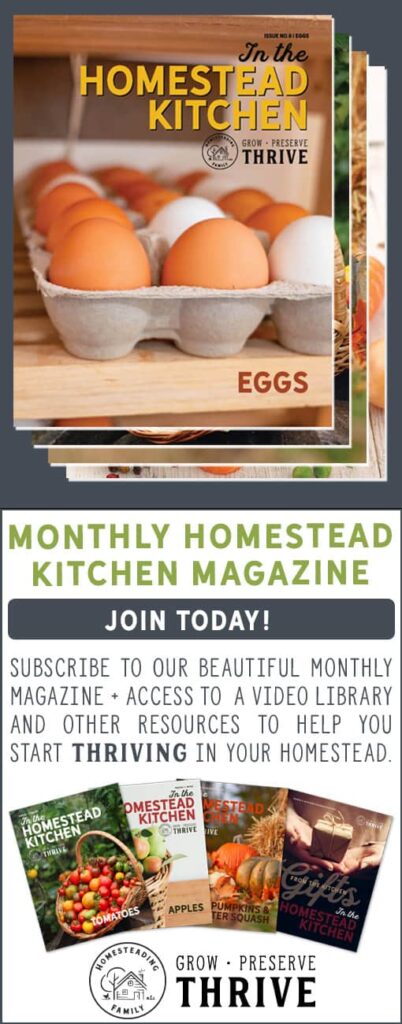Are you ready to explore the world of gluten-free sourdough and uncover the best flour to use for a gluten-free sourdough starter? Whether you are new to gluten-free baking or looking to improve your sourdough loaves, this guide will provide expert tips and recommendations.

Why I Love Gluten-Free Sourdough
Unlike regular sourdough bread making, where you have to master the development of gluten for a proper rise, gluten-free sourdough is actually easier. It’s a great place for beginner sourdough bread makers to start because you don’t have to master the skill of developing the gluten.
Because of this, the process is simplified, making it easier to get your feet wet before diving into the world of traditional sourdough using wheat flours.
Once you’re ready to jump in with both feet, be sure to check out the following posts:
- How to Make Sourdough Starter
- How to Store a Sourdough Starter
- 7 Sourdough Mistakes You Might Be Making
- 33 Things I Wish I Knew BEFORE Baking With Sourdough
- True Sourdough Bread vs. Commercially Prepared Bread

Can I Feed My Sourdough Starter With Gluten-Free Flour?
Many people wonder whether a sourdough starter can be fed with gluten-free flour. Not only can you feed a traditional sourdough starter with gluten-free flour, but you can also make a sourdough starter exclusively from gluten-free grains and legumes.
It is important to note that whatever flour you create your starter with, those flours must be in the final loaf as well. So, choosing a blend of flours is usually the best way to go.
By milling your own flour, you can select the specific flour type or create flour blends that are best for gluten-free sourdough.
Which Gluten-Free Flour Is Closest to All-Purpose Flour?
The quest to find a flour that can replicate the versatility and texture of all-purpose flour can be a difficult one. The key is understanding that no single gluten-free grain will mimic the action of gluten found in wheat.
The answer to this dilemma lies in using the characteristics of multiple gluten-free grains, legumes, and starches to work together in order to create an all-purpose blend.

What Is the Best Flour to Feed Gluten-Free Sourdough Starter?
Choosing the right flour is essential for ensuring successful fermentation and rise in your gluten-free sourdough starter. Different flours have varying properties that can impact the flavor, texture, and overall quality of your sourdough bread.
When selecting gluten-free flours to use in your sourdough starter, consider the flours that you will use in your gluten-free sourdough recipes. If the flours in your sourdough starter are completely different from the flours in your recipe, they won’t work as well together as when you use matching flours from both sources.
This doesn’t mean that you have to have all of the flours in your recipe match what’s in your starter, but you will have increased success if you use as many like flours as possible.
Additionally, make sure the flour you use is suitable for fermentation. Nut flour, for example, will go rancid before the fermentation process kicks in. Here are some commonly used gluten-free flours that work well in a gluten-free sourdough starter:
| Flour | Characteristics |
| Brown Rice Flour | This flour has a mild flavor and is versatile for both feeding the starter and baking gluten-free sourdough bread. |
| Buckwheat Flour | Despite its name, buckwheat is not related to wheat and is gluten-free. It adds a nutty flavor to your sourdough starter and can contribute to a deeper and more complex taste in the bread. |
| Sorghum Flour | Made from a gluten-free grain, sorghum flour adds a slightly sweet and earthy flavor to your sourdough starter. |
| Quinoa Flour | This protein-rich flour is derived from quinoa seeds and adds a unique taste to your sourdough starter. |
| Other Gluten-Free Flours | In addition to the flours mentioned above, there are many other gluten-free flours you can experiment with for your sourdough bread. These include teff flour, millet flour, chickpea flour, and more. Each flour has its unique characteristics, so don’t be afraid to try different combinations to achieve the perfect taste and texture. |
These are just a few examples of the vast array of gluten-free flours available. Each flour has its unique characteristics, so feel free to experiment and find the combination that works best for your taste preferences.
Homesteading Hack: Always use high-quality gluten-free flour to maintain the integrity and flavor of your gluten-free sourdough starter. Opting for organic and non-GMO options can further enhance the overall quality of your homemade bread.

The Art of Gluten-Free Homemade Bread
Keep in mind that gluten-free baking can be trial and error, so don’t be discouraged if your first attempts don’t turn out perfectly. Believe me, I would know. When I first started baking gluten-free recipes, the first couple of months were just failed recipe after failed recipe. My GF bread not only tasted like cardboard, it even looked like cardboard.
Remembering this frustration inspired me to offer The Art of Gluten-Free Homemade Bread. Not only does it include dozens of tried-and-true from-scratch gluten-free recipes, but it also includes an in-depth guide on the characteristics of gluten-free flours and their purpose in gluten-free baking, how to make your own flour blend, dough binders and enhancers, substitutions, and so much more!
With this valuable tool, you will shorten your gluten-free learning curve and soon enjoy delicious gluten-free sourdough bread that rivals its gluten-filled counterparts!
Although we’re sold out of the physical book, we still have some digital options available! Get on the waitlist for the physical book and get instant access to a digital copy today!

Tips for Gluten-Free Sourdough Baking
Baking delicious gluten-free sourdough bread requires specific techniques and considerations. Here are some valuable tips and tricks to help you achieve the best results with your gluten-free sourdough baking endeavors:
- Choose the Right Gluten-Free Flours – Experiment with different gluten-free flours to find the ones that work best to meet your taste, texture, and nutritional needs. Do your research to make sure the flours you choose are suitable for fermentation and use a blend of flours in your sourdough starter that matches the flour blend in your recipes. Additionally, consider using organic, whole-grain flours that may have higher yeast populations than processed flours.
- Combine Flours for Better Results – One single gluten-free flour will not mimic the properties of wheat, but mixing multiple gluten-free flours can improve the overall texture and taste of your sourdough bread. For instance, a combination of rice flour and almond flour can create a light and airy loaf, while adding a small amount of starches like tapioca flour or potato starch can enhance the chewiness.
- Make Your Own Flour Blend – Store-bought blends are expensive, use too many starches, and often yield a gummy texture. When you make your own blend, you can control the quality of ingredients and improve the nutritional content.
- Give Your Sourdough Starter Some TLC – Consider using organic, whole-grain flours that may have higher yeast populations than processed flours, and remember to consistently feed your starter with fresh flour and water to maintain a healthy environment for yeast growth. Keep the starter at the right temperature (around 75°F to 80°F) to encourage yeast activity.
- Give Your Dough Time to Rise – Since gluten-free flours lack the elasticity of gluten, it’s important to give your dough sufficient time to rise and develop structure. Be patient and allow for longer fermentation times, as this will improve the flavor and texture of your bread.
- Do Not Use Chlorinated Water – Chlorinated water can kill the microbial growth needed for a healthy and active starter. Use non-chlorinated tap water or filtered water instead.
- Experiment With Hydration – Gluten-free flours absorb liquid differently than their gluten counterparts. Adjust the hydration levels in your recipe to achieve the desired consistency. Start with a slightly higher hydration and adjust as needed to prevent a dry or dense loaf.
- Do NOT Overmix – Traditional wheat doughs need to be kneaded in order to activate the gluten. Gluten-free dough, by contrast, is delicate and will typically yield a better texture when mixed by hand and minimally handled.
- Use a Dutch Oven or a Baking Stone – To achieve a crusty exterior and a soft, moist interior, bake your gluten-free sourdough bread in a preheated Dutch oven or on a baking stone. This helps to trap the steam, mimicking the effect of a professional bread oven and giving your loaf a beautiful rise and crust.
Gluten-free sourdough bread can be just as delicious and satisfying as its gluten-containing counterpart. With the right flour and techniques, you can create loaves that are flavorful, moist, and have a pleasing texture. Don’t let dietary restrictions limit your enjoyment of homemade bread. Embrace gluten-free sourdough and discover a whole new world of possibilities.

FAQ
Yes, you can feed your sourdough starter with gluten-free flour. Gluten-free flours such as brown rice flour, buckwheat flour, or a gluten-free flour blend can be used to maintain and nourish your gluten-free sourdough starter.
The best flour to feed your gluten-free sourdough starter depends on personal preference and desired results. Some popular options are brown rice flour, buckwheat flour, or a gluten-free flour blend. Experiment with different flours to find the one that works best for you.
There could be several reasons why your gluten-free sourdough starter is not rising. It could be due to insufficient feeding, using tap water instead of filtered water, or not maintaining the right temperature. Ensure that you are following the proper feeding schedule and creating a warm environment for optimal fermentation.
While no gluten-free flour can perfectly replicate the qualities of all-purpose flour, a mixture of different gluten-free flours can come close. A blend of whole-grain gluten-free flours and starches often yields a texture and flavor similar to all-purpose flour in gluten-free baking.
There are various gluten-free flours that can be used for sourdough baking. Popular options include brown rice flour, buckwheat flour, sorghum flour, millet flour, and tapioca flour. Each flour adds its unique flavor and texture to the final bread.

















